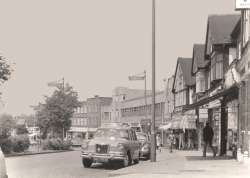History of Hayes
The first mention of Hayes as a local place name was in 1177. It is thought to mean “The rough ground covered with brushwood and undergrowth”.
Until the twentieth century Hayes was a small rural village clustered around the church and Hayes Place. As at West Wickham, the arrival of the railway in 1882 had very little effect resulting only on a few houses along what is now Bourne Way.
By 1923, new houses had begun to appear at the far north end of the parish as Edwardian Bromley spilled over the boundary and spread along Hayes Road, but it was not until 1927 that changes began to affect the village itself. Parts of the Norman estates along Hayes Lane were sold off for building, but most significantly the death of Sir Everard Hambro of Hayes Place in 1925 caused the break up of that estate and those at Pickhurst soon followed.
This, coinciding with the electrification of the railway to London in 1926, made Hayes a very desirable building location.
Development was carried out by a mixture of large builders such as Henry Boot of Sheffield and local ones such as George Spencer of West Wickham. It continued throughout the 1930s.
Following the war the area north of the village was developed in two stages; first the Hayes Place council estate in the forties and fifties and later from 1960, the modernist Hayesford Park estate, designed by the Building Design Partnership.
Subsequent development has been mainly infilling and building replacement.








